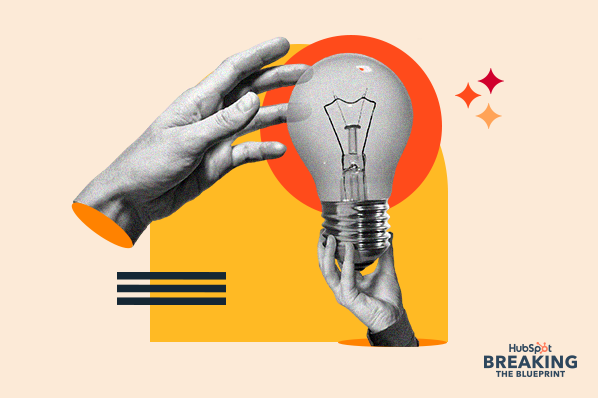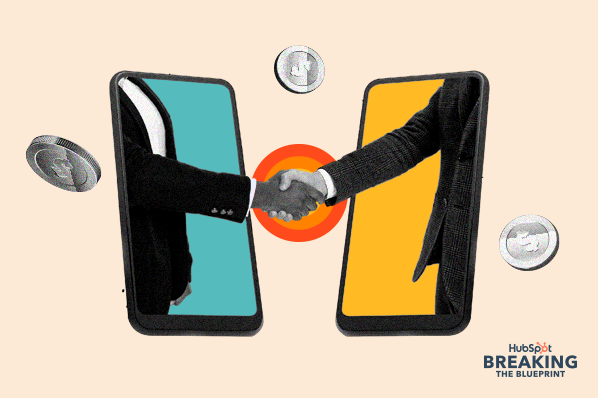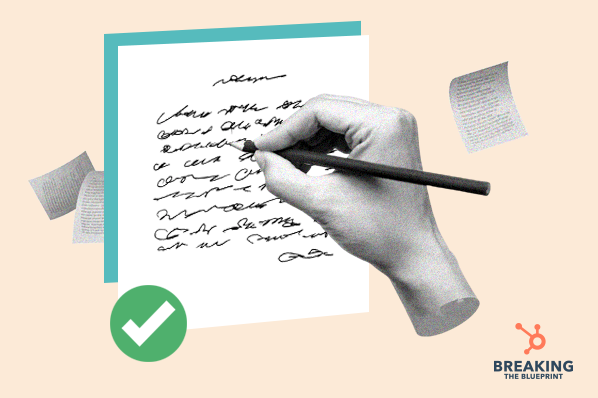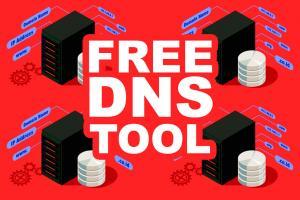Breaking the Blueprint
Welcome to Breaking the Blueprint — a blog series that dives into the unique business challenges and opportunities of underrepresented business owners and entrepreneurs. Learn how they’ve grown or scaled their businesses, explored entrepreneurial ventures within their companies, or created side hustles, and how their stories can inspire and inform your own success. Representation matters. We hear this over and over again. And most people agree. However, not all representation is created equal, and this is important to recognize, especially to ensure your efforts in including more people in your marketing are received positively rather than being met with frustration and skepticism. As the number of brands embracing inclusive marketing and prioritizing visual imagery that accurately represents their target audience grows, it becomes crucial for marketers to become well-versed in how to do representation in marketing the right way. When done right, it demonstrates to underrepresented consumers that you’re committed
Welcome to Breaking the Blueprint — a blog series that dives into the unique business challenges and opportunities of underrepresented business owners and entrepreneurs. Learn how they’ve grown or scaled their businesses, explored entrepreneurial ventures within their companies, or created side hustles, and how their stories can inspire and inform your own success. It’s no secret that Native entrepreneurs face an uphill battle when starting up their businesses. Indigenous businesses have hurdles at nearly every step of the process, whether it’s a lack of access to credit, trouble getting technical assistance or training, or a cultural barrier between investor expectations and business owner goals. Yet some business owners persist anyway, climbing over whatever obstacles are ahead to succeed in their respective fields. Native entrepreneurs have moved into a multitude of industries with profitable, impactful businesses amid surges in federal and tribal support, and Indigenous people are seeing themselves represented in
Welcome to Breaking the Blueprint — a blog series that dives into the unique business challenges and opportunities of underrepresented business owners and entrepreneurs. Learn how they’ve grown or scaled their businesses, explored entrepreneurial ventures within their companies, or created side hustles, and how their stories can inspire and inform your own success. A single word can make or break a relationship, especially in its early stages. This includes relationships with sales prospects, clients, and co-workers. Most of us were raised to think that language and action are two separate things. That words don’t really matter. That an issue involving language is “just semantics.” But in more than two decades of researching how language actually works, I’ve learned that language is social action. In fact, every single thing you say or write can cause a relationship to improve or deteriorate. By paying attention to our language and making sure
Welcome to Breaking the Blueprint — a blog series that dives into the unique business challenges and opportunities of underrepresented business owners and entrepreneurs. Learn how they’ve grown or scaled their businesses, explored entrepreneurial ventures within their companies, or created side hustles, and how their stories can inspire and inform your own success. In today’s rapidly changing corporate landscape, the concept of “professionalism” is undergoing a transformative shift, one that may completely radicalize the working world for better. For years, traditional professionalism standards have shaped how individuals present themselves and navigate the workplace. However, these standards have been criticized for their lack of inclusivity, sustaining inequality and limiting opportunities for historically underrepresented groups, especially Black and Brown individuals. This article explores the historical context behind these constructed principles, the reasons they exist, and ways to empower BIPOC/POC professionals in their respective journeys towards creating more inclusive and equitable workplaces. Table of Contents:
Welcome to Breaking the Blueprint — a new blog series that dives into the unique business challenges and opportunities of underrepresented business owners and entrepreneurs. Learn how they’ve grown or scaled their businesses, explored entrepreneurial ventures within their companies, or created side hustles, and how their stories can inspire and inform your own success. White authors dominate book publishing, and it can be difficult for people of color to find successful entrepreneurship stories written by founders, CEOs, and marketing executives with similar cultural backgrounds.Penguin Random House, a “Big Five” publisher, reported that 76% of their released books in 2019-2021 were by white contributors. This percentage may correlate with 74% of their staff being white. Between statements to prioritize DEI efforts and leadership restructuring—like at PRH after their bid to acquire Simon & Schuster was halted—time will tell if publishing houses will make significant strides in diversity across their rosters and
Welcome to Breaking the Blueprint — a blog series that dives into the unique business challenges and opportunities of underrepresented business owners and entrepreneurs. Learn how they’ve grown or scaled their businesses, explored entrepreneurial ventures within their companies, or created side hustles, and how their stories can inspire and inform your own success. Publishing an ad or working with influencers isn’t the only option to get your business in front of an audience on YouTube. And with 41% of YouTube users being ethnically diverse, this multicultural demographic is eager to watch and support brands and entrepreneurs who they feel represent their culture and life experiences. Small business owners are starting channels to share videos that connect deeper with their customers, introduce themselves to new consumers, and even earn some passive income. When Azia Anderson, the founder of prty grl beauty, started sharing videos about her Black-owned business, she saw it
Welcome to Breaking the Blueprint — a blog series that dives into the unique business challenges and opportunities of underrepresented business owners and entrepreneurs. Learn how they’ve grown or scaled their businesses, explored entrepreneurial ventures within their companies, or created side hustles, and how their stories can inspire and inform your own success. Small businesses are the lifeblood of America, and those owned by LGBTQ+ entrepreneurs make a hugely positive impact. According to a 2022 report by the NLGCC, National LGBT Chamber of Commerce, LGBTQ-owned businesses contribute over $1.7 trillion to the U.S. economy and support over 33,000 jobs annually. But as any entrepreneur knows, starting and growing a small business is not just hard work, but it can be expensive. Startup and growth costs are especially challenging for business owners in marginalized populations, such as the LGBTQ+ community, who face higher levels of financial insecurity and fewer resources than
Welcome to Breaking the Blueprint — a blog series that dives into the unique business challenges and opportunities of underrepresented business owners and entrepreneurs. Learn how they’ve grown or scaled their businesses, explored entrepreneurial ventures within their companies, or created side hustles, and how their stories can inspire and inform your own success. Native entrepreneurship often occupies two worlds. Aspiring Indigenous business owners navigate historic barriers to traditional financing and growth — while building culturally informed, sustainable ventures. This challenging climate hasn’t stopped these entrepreneurs from entering nearly every industry imaginable to make an Indigenous imprint on the world while supporting themselves and their communities. Some Native business owners build on cultural touchstones like tribal art and stories to launch design studios and art shops. Others address long-time systemic hurdles to credit by stepping into the financial sector, bringing an Indigenous perspective to the issue that often proves crucial in addressing it.
Welcome to Breaking the Blueprint — a blog series that dives into the unique business challenges and opportunities of underrepresented business owners and entrepreneurs. Learn how they’ve grown or scaled their businesses, explored entrepreneurial ventures within their companies, or created side hustles, and how their stories can inspire and inform your own success. Courage and hope reside at the heart of building a business. Hope for a better quality of life, financial stability, and, if we’re lucky, generational wealth for our families. However, for Asian American and Pacific Islander entrepreneurs, spinning an idea into a profitable business requires startup funding that is often difficult to access because of systemic barriers. As an alternative to venture capital, angel investments, and loans, business grants can help bridge this gap by awarding money that doesn’t require repayment or equity exchange. This post will explore where AAPI entrepreneurs can find business grants, and how
Welcome to Breaking the Blueprint — a blog series that dives into the unique business challenges and opportunities of underrepresented business owners and entrepreneurs. Learn how they’ve grown or scaled their businesses, explored entrepreneurial ventures within their companies, or created side hustles, and how their stories can inspire and inform your own success. Everything You Need to Know about the Disability-Owned Business Enterprises (DOBE) Certification Minority-owned business certification dates back to the 1970s but only gradually began being considered potentially applicable to entrepreneurs with disabilities some 15 years ago — decades after the passing of the Americans with Disabilities Act in 1990. This explains why, in 2023, there are only 500 DOBEs across the country despite the numerous commercial advantages. What is the disability-owned business certification? A disability-owned business enterprise (DOBE for short) is a for-profit business that is at least 51% owned by an individual with a disability. The DOBE certification















